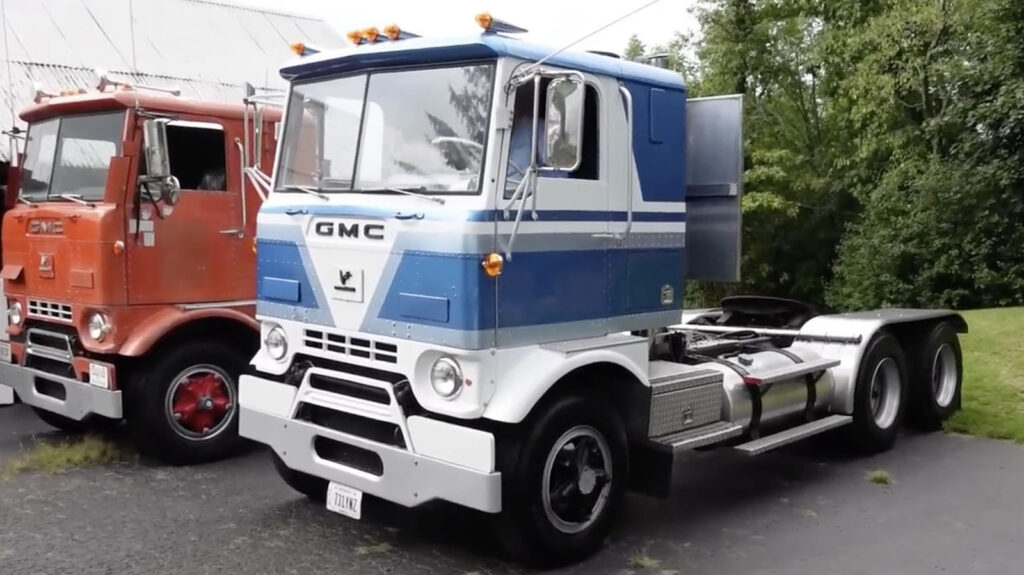
Screenshot
General Motors (GM) once made a significant mark in the heavy-duty truck market with its innovative semi-truck known as the Crackerbox. Launched in 1959, this vehicle was recognized for its advanced engineering and unique design, positioning it as one of the world’s most sophisticated semi-trucks during its time. However, GM’s foray into the heavy-duty sector ended in 1986, when the company exited the market due to declining market share.
The Crackerbox, formally named the GMC DLR 8000 and DFR 8000, was a Class 8 cabover semi-truck notable for its compact cab design. With a total cab length of only 48 inches, the truck was engineered to reduce weight and maximize payload capacity, appealing to an industry increasingly focused on efficiency. The innovative use of fiberglass body panels and a newly designed frame resulted in the Crackerbox being half the weight of its predecessor.
By the late 1950s, the Crackerbox featured cutting-edge technologies such as independent front suspension, power steering, and an air ride system. Truck operators could choose between single or tandem rear axles, as well as various engine options, including gasoline and Detroit Diesel engines. These advancements contributed to the truck’s reputation for speed and payload capability, making it a competitive option in the trucking industry.
Despite its technical achievements, the Crackerbox did not win the hearts of many truck drivers. Its unconventional design and compact cab presented challenges in terms of driver comfort and safety. The cab’s lack of space and insulation resulted in a noisy, rough ride, which contrasted sharply with the romanticized image of long-haul trucking. Additionally, the positioning of the cab, directly at the front of the vehicle, raised safety concerns that would eventually lead to improved standards in later decades.
The Crackerbox’s run lasted until 1969, when it was succeeded by GM’s more modern models, the GMC Astro 95 and Chevrolet Titan semi-trucks. These newer trucks became the face of GM’s heavy-duty offerings throughout the 1970s and into the 1980s. However, by the mid-1980s, GM found itself struggling in the semi-truck market and eventually decided to exit the segment altogether. The company sold its stake to Volvo, marking the end of an era for GM in the heavy-duty truck industry.
Although the Crackerbox may not be considered a classic favorite among truck enthusiasts today, its impact on the American trucking landscape during a transformative period is undeniable. The innovations introduced by GM through this unique semi-truck highlighted the company’s ability to push boundaries in truck design and engineering, even if it did not become the enduring symbol of American trucking like brands such as Kenworth.
As the trucking industry continues to evolve, the story of the Crackerbox serves as a reminder of GM’s historical contributions to the sector. While the company no longer produces heavy-duty trucks, the legacy of the Crackerbox is a testament to the ongoing quest for efficiency and innovation in the world of transportation.






